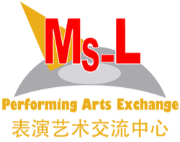Influenced by China’s ancient philosophy, Tai Chi is a comprehensive system of movements to exercise body and mind together, which is proven to be valuable to human life. The ancient art of Tai Chi has been adapted and modified to promote health by focusing on exercise, meditation and relaxation, which are incorporated into a healthy lifestyle. Tai Chi movements are rhythmic and flowing, soft and yielding, promoting postural awareness, deeper breathing and physical relaxation.
Tai Chi is best described as a moving combination of yoga and meditation. Many of the movements are originally derived from the martial arts, although the way they are performed in Tai Chi is slow, soft and graceful.
In Chinese philosophy and medicine there exists the concept of ‘chi’, a vital force that animates the body. One of the avowed aims of Tai Chi is to foster the circulation of this ‘chi’ within the body to enhance the practitioner’s health and vitality. This ‘chi’ circulates in patterns that are closely related to the nervous and vascular system.
Tai Chi also fosters a calm and tranquil mind, focused on the precise execution of these exercises. Learning to do them helps balance, alignment and rhythm of movement. The practice of Tai Chi can therefore contribute to better posture when standing, walking and running.
Angus Clark® has summarised Tai Chi’s benefits in his book as follows:
- It benefits health and wellbeing
- It prevents degenerative illnesses
- It increases longevity
- It stimulates circulation
- It aligns misplaced bones, mobilises the joints
- It maintains vital organs
- It improves balance and co-ordination
- It revitalises body and brain
- It trains the mind to focus and concentrate
- It widens sensitivity and the capacity to feel.
Tai Chi is also guaranteed to improve self-control and your sex life.
Everything in the universe is in motion and movement is the essence of existence. However, modern life is gradually taking away many movements from us, as every modern product is designed to reduce human labour – car washing machines, escalators, even the internet. More and more people now spend more time in the office and live a life with less physical movement and decreasing socialising circles.
Tai Chi is an ideal exercise for all ages and all physical types. Depending on personal interest, Tai chi exercises can be practiced for different purposes, including relaxation, mental training, sleeping therapy, self-defence and exercise for wellbeing. Tai Chi is especially suitable for those people who feel the gym is too energetic and too mechanical.
Main characteristics of Tai Chi :
- Exercise body and mind together
- Incorporating breathing and concentration
- Well-balanced exercises and co-ordination with every parts of body
- Slow lissom movements outside and firm steady strength inside
- Smooth flow motion with aesthetic perception
- Tai Chi practice is normally in groups
The Chinese government has put special effort into Tai Chi development in recent decades. Some forms of Tai Chi exercises have been introduced to schools, many new forms are based on scientific composition while others have strictly unified movements for competition. The latest forms are Form 24, Form 42 and Form 48.
In 1978, China started to practise the open policy to the world under the leadership of the famous reformer Deng Xiaoping. On November 16th of the year, he wrote an inscription to Chinese Wushu Association: ‘Tai Chi is good.’ In order to promote Tai Chi, on the day in twenty years later, the Chinese Wushu Associations organized the magnificent event called Tai Chi Is Good, in which thousands of people gathered at Tian-an-men Square to practice Tai Chi, see the figure1. One of the organisers is Men huifeng, today’s most influential Tai Chi master (figure 2).
Talented, young Tai Chi master Zheng Wen-peng from Beijing is coming to London to work with Ms-L to deliver modern Tai Chi to Londoners and dedicated instructors across the UK.



Recent Comments